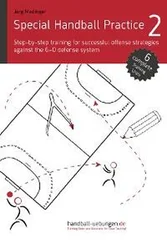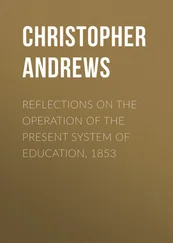Christian Horak - The CommFlow System
Здесь есть возможность читать онлайн «Christian Horak - The CommFlow System» — ознакомительный отрывок электронной книги совершенно бесплатно, а после прочтения отрывка купить полную версию. В некоторых случаях можно слушать аудио, скачать через торрент в формате fb2 и присутствует краткое содержание. Жанр: unrecognised, на немецком языке. Описание произведения, (предисловие) а так же отзывы посетителей доступны на портале библиотеки ЛибКат.
- Название:The CommFlow System
- Автор:
- Жанр:
- Год:неизвестен
- ISBN:нет данных
- Рейтинг книги:5 / 5. Голосов: 1
-
Избранное:Добавить в избранное
- Отзывы:
-
Ваша оценка:
- 100
- 1
- 2
- 3
- 4
- 5
The CommFlow System: краткое содержание, описание и аннотация
Предлагаем к чтению аннотацию, описание, краткое содержание или предисловие (зависит от того, что написал сам автор книги «The CommFlow System»). Если вы не нашли необходимую информацию о книге — напишите в комментариях, мы постараемся отыскать её.
The CommFlow System — читать онлайн ознакомительный отрывок
Ниже представлен текст книги, разбитый по страницам. Система сохранения места последней прочитанной страницы, позволяет с удобством читать онлайн бесплатно книгу «The CommFlow System», без необходимости каждый раз заново искать на чём Вы остановились. Поставьте закладку, и сможете в любой момент перейти на страницу, на которой закончили чтение.
Интервал:
Закладка:
Why "Community"? I chose this term because it has a very related word root with Communication itself. What we need to establish "comm-u-nication", is Comm-Unity, which means a common basis upon which to communicate in the first place.
We often forget this and take things for granted. Once of the first mistakes we make in communication is the assumption that our communication partners (the audience), is like us. As a matter of fact, very many times the audience is entirely un-like us, and if we make too many assumptions about "like-ness", they will dis-like us.
We all have experienced situations where communication flows easily. This is very often the case in a group of people that know one-another well, that have a common language, a common cultural bias, that share a context such as an event and that have the ability to perceive the full range of communications including body language, pheromones, tone of voice, appearance etc. When these parameters line up, we often hear the term "rapport" as in, "they are having a good rapport with x or y". In the case of good acquaintances, this often even leads to a form of "mind reading" where one person is finishing the sentences of the other person.
In many cases where communication fails or partially breaks down, we have failed to establish rapport, and in extreme cases, we even treat the audience in a way that provides our social brain with ample proof that it should trigger a threat response and reject you and your communication. (Go back to chapter 2 to read up on the Social Brain and the SCARF principle)
Here is a checklist of things to do before you initiate any communication, verbal or written. Try this out, and see how it will improve your communication success. (Note: This chapter is written with a fairly western bias towards culture and behavior. I am fully aware there are vast differences in other cultures but I have chosen to keep things focused for purposes of brevity)
Here is the Comm-Unity Checklist for preparing your communication. Check as many as you can and try to make this your second nature over time to unlock this gate of understanding and agreement. Even if you are not speaking/communicating 1:1, think about the "average" aspect of your community.
( ) Try to put yourself into the shoes of your audience. What is their background, their cultural bias, their purpose of being in the place they are in, their current situation, etc.
( ) What do you have in common with your audience? (Same language, culture, school, background, degree, associations, home town, … )
( ) What is personality style of the audience? (Thinking/data oriented, feeling/emotion oriented, action/results oriented, outgoing, quiet)
( ) What do you know about the culture of your audience (Country, language, religion, traditions)
If you have a good knowledge of the above areas, think about how you want to structure your communication up front. If you are walking into a communication situation "blind", try to establish as much common ground as possible before you engage.
Here are some examples:
In a public speech: Understand the agenda (what content came before, what content comes after your contribution). Understand the audiences intent of being here and try to engage the audience in some form of dialog as the first thing you do. For example ask for a show of hands on questions like: "How many of you are from this town?"
In a 1:1 direct face-to-face communication: Understand what the person has just finished doing and will do after you are done with the talk/chat/interview. Ask questions up front, before you jump into the middle of the dialog. Watch for common language (abbreviations, jargon, technical terms) and try to match the pace and manner of their speech.
On the phone: Ask if this is a good time to speak. Ask if talking on the phone is appropriate or if another form of communication is more appropriate. Share what you know about the person, "I hear you are just back from vacation".,etc.
Try this out the next time you start a communication. Especially when you are in a time of conflict. If you do this preparation well, you will see amazing effects just from a few minutes of mentally "walking in the shoes" of your audience.
Chapter 5: Intent
Let’s assume that Key One (Community) has been successfully used to unlock the first gate of understanding and agreement. You have established rapport with your audience (they are at ease, they are not using aggressive or rejecting motions, there is a level of mirror body language, etc.) and you have a good handle on where they are coming from and where they are going.
The second key to understanding and agreement (Note: this does not imply an order in terms of which gate has to be opened first) is the gate called "Intent".
What I mean by intent is that we should be crystal clear on what we are trying to get out of the communication. It can be a mix of any of the intentions listed below:
Relax .. calm the waves, smooth tension and take aggressive potential out
Socialize .. have a interaction without agenda or pre-set goals
Interview .. try to obtain as much information as possible from the interaction
Inform ... provide the audience with information relevant to their context
Give feedback .. provide the audience with feedback on a program, paper, idea
Challenge .. be a devil's advocate or a critic and find loopholes in a line of thinking or writing
Moderate .. be a coach or moderator to help others communicate better
Educate ... transfer knowledge to the audience (this implies practical examples / testing)
Inspire ... provide the audience with a vision for excellence and inspire them to follow a cause
Motivate .. provide the audience with reasons to act or behave in a specific way
Convince .. provide the audience with compelling reason to make a decision or change their mind
As you can see from the list above, there are many different intentions in an interaction, and certainly, we can move from one intention to the next in the same conversation. We should be aware of the following factors when dealing with the key of intention:
Make sure both parties are informed about the intention. Maybe you can see the conflict when one person seeks to convince, when the other person seeks to socialize, or when the intent of inspiration meets an audience primed to challenge.
Make sure that you understand the different communication models involved when setting up the communication, for example, when you are trying to educate, make sure you have means of checking if the education has actually been effective. When you are trying to motivate, make sure you have a clear call to action that you can check on later, etc.As an audit, for example, after you have tried to convince someone, you can even follow this checklist to see what you can do better next time:
( ) Audience relaxed and settled in?
( ) Enough time given to socialize and establish rapport?
( ) Question asked up front to establish flow?
( ) Relevant information given about purpose and context of interaction?
( ) Feedback given to a response of the audience (Active Listening)
( ) Challenged the assumptions / information given for logic / consistency
(in a non-aggressive way)
( ) Moderated a conflict by looking at both sides of the argument and focusing
on an outcome
( ) Transferred useful knowledge to the audience including practical examples
( ) Provide the audience with a vision for excellence or inspires them to follow a
cause or ideal
( ) Provide the audience with reasons to act or behave in a specific way
( ) Convince the audience with compelling reason to make a decision or
change their mind
Try it out. I bet you will discover that many times when we experience a communication break-down, it was because we failed to unlock the "Intent" gate to understanding and agreement.
Читать дальшеИнтервал:
Закладка:
Похожие книги на «The CommFlow System»
Представляем Вашему вниманию похожие книги на «The CommFlow System» списком для выбора. Мы отобрали схожую по названию и смыслу литературу в надежде предоставить читателям больше вариантов отыскать новые, интересные, ещё непрочитанные произведения.
Обсуждение, отзывы о книге «The CommFlow System» и просто собственные мнения читателей. Оставьте ваши комментарии, напишите, что Вы думаете о произведении, его смысле или главных героях. Укажите что конкретно понравилось, а что нет, и почему Вы так считаете.












